Quantum Read online
Page 2
Nolan followed his father and Kelsey into the conference room.
‘Excuse me while I go make sure everything’s ready for Sandstrom’s dog and pony show,’ Sean said before making a beeline for the podium.
From the doorway Nolan and Kelsey surveyed the crowd. The attendees had broken into several small groups, enjoying both the refreshments and the conversation.
‘I see them, Kelsey. Look by the windows. The blond guy with the red beard is Sandstrom. Next to him – the older man, about a foot shorter with white hair and tortoiseshell glasses – that’s Paramo.’
Beside the curved wall of glass that bowed outward into the woods, Kelsey spotted Ted Sandstrom and his mentor, Raphaele Paramo.’
‘Nolan,’ Sandstrom called out as they approached, relief visible on his face. ‘I was afraid you weren’t going to show.’
‘Wouldn’t miss it, Ted,’ he replied, then introduced Kelsey to the two physicists.
‘Professor Newton,’ Paramo said, shaking her hand enthusiastically, ‘this is indeed a pleasure. I’ve read your paper on optical electronics. Very interesting work.’
‘Thank you,’ Kelsey replied, enjoying the admiration of a respected peer.
Sandstrom then clasped her hand warmly. ‘I understand we have you to thank for our being here today.’
‘That may be overstating things a bit,’ she demurred. ‘All I did was look over the report that Notre Dame sent to MARC regarding your research. After I read it a few times – I admit it took more than one pass to really comprehend what you and Professor Paramo have accomplished – I told Nolan’s father that he’d be a fool not to take a closer look.’
‘Well, thank you for your vote of confidence.’
Across the room, Sean Kilkenny began to address those assembled. ‘Ladies and gentlemen,’ his amplified voice resonated above the murmuring conversations, ‘if you’ll kindly take your seats, we can move on to the next item on our agenda.’
The MARC board of directors, a mix of business executives and university regents, took their places at the conference table. Around the periphery of the room, members of the still-forming Notre Dame Applied Research Consortium (ND-ARC) and important guests of both universities returned to their seats. Sean Kilkenny waited until everyone was ready before proceeding.
‘Last fall I had the pleasure of meeting our guest presenter while in South Bend for the Michigan-Notre Dame football game. While I am sure that some of us were pleased with the outcome of that game’ – MARC’s founder paused as a ripple of laughter followed his remark – ‘I am doubly sure that others here are looking forward to the rematch this fall.’ Another pause for partisan laughter. ‘Be that as it may, my encounter with Ted Sandstrom, a professor of physics at Notre Dame, left a far greater impression on me than the game. Fellow board members and honored guests, I would like to introduce Professor Ted Sandstrom.’
The MARC director stood aside as Sandstrom approached the podium carrying a large Halliburton case.
‘They’re all yours, Ted,’ Sean said quietly as he clipped a wireless microphone to Sandstrom’s lapel.
Sandstrom looked over his audience. He recognized among the guests several wealthy Notre Dame alumni and a few of the regents. The presidents of both universities were seated together along the left wall. A sudden wave of nausea hit him, but it quickly subsided as he realized that this was no different from any classroom he’d ever been in. He was there to teach these people something about physics, and that was something he did very well.
‘Good afternoon. As Mr Kilkenny said, I am a physicist. More precisely, I am an experimental physicist, which means I like to test ideas to see whether or not they work.’
Sandstrom pressed a button on the podium; the lights dimmed and the Asian symbol for yin and yang appeared on the large, flat wall display.
‘In declaring that E equals mc squared, Einstein linked energy and matter together in such a way that the two are inseparable and, in some ways, indistinguishable. Matter is a manifestation of energy. If you label the left side of this symbol as matter’ – Sandstrom pointed to the black yang – ‘and the right as energy, then the region that I’m interested in is here.’
Sandstrom traced the S line that defined the border between yin and yang.
‘Here, in the boundary between matter and energy, resides the realm of quantum physics. This is where the classical physics of Newton and Galileo fall apart. The mathematical precision that we use to describe the motion of the planets is dethroned by an uncertainty principle that replaces absolutes with probabilities. In this thin edge, the distinction between matter and energy blurs.’
Sandstrom touched the podium keyboard again, and the image transformed into a horizontal grid, tilted slightly upward to show perspective. At random intervals two sections of the plane would distort, one spike warping upward while another went in the opposite direction. The warped areas would break free like water droplets and form gridded spheres that moved about briefly before being reabsorbed by the plane.
‘The plane you see in this illustration represents a negative-energy state. This condition exists only in a vacuum in which all matter has been removed. In this state, quantum theory predicts that fluctuations in this energy allow for the spontaneous creation of both matter and antimatter.’ Sandstrom pointed at the gridded spheres. ‘Theory also states that these particles disappear rather quickly, and being a balanced system, the net energy is essentially zero. This just shows, even at a quantum level, that you can’t get something for nothing.’
The gridded plane expanded and curled around on itself, forming a sphere.
‘One theory about the origin of our universe puts it in a negative-energy state at the start of the Big Bang.’
Sandstrom zoomed in on the gridded sphere just as thousands of tiny blue and red particles appeared inside it.
‘Now if matter and antimatter are created in equal amounts, then all these new particles should have collided with their opposites and annihilated each other in a burst of energy – leaving the universe a net zero.’
The red and blue particles quickly disappeared, and the gridded sphere collapsed into nothingness.
‘This outcome is true only for a perfectly symmetrical universe. Suppose that our universe was asymmetrical, and at the moment of the Big Bang, there was more matter than antimatter.’
The new animation showed thousands of red and blue particles racing around, each collision giving off a brief white flash. After a few seconds the gridded sphere held only blue particles. The view panned out as the sphere expanded until it evolved into a spiraling galaxy and then gradually changed back into the yin-yang symbol.
‘If this theory is valid, the question becomes: What caused the universe to be asymmetrical, allowing unequal amounts of matter and antimatter particles to be produced?’ Sandstrom paused briefly and looked over his audience. ‘At this point, I suspect that more than a few of you are wondering where I’m going with this presentation. So let me backtrack a bit for you. Eleven years ago Professor Raphaele Paramo and I began to investigate the effect of strong electrical fields on totally evacuated spaces. Our experiments had some very interesting results.’
Sandstrom tapped the keyboard, and a photograph of a laboratory, scorched and in shambles, filled the screen.
‘This one got away from us.’ A brief laugh rose from the audience. ‘Based on the theoretical calculations, the energies involved in this experiment should have been very low. As you can see, theory and reality were not in agreement. When we activated our test apparatus, an energy surge built up inside the evacuated chamber. The chamber quickly ruptured and a ball of lightning emerged. This coherent sphere of electricity floated around the lab for a few seconds before landing on an electrical panel. The explosion and resulting fire did significant damage to our lab. Fortunately, no one was hurt.’
The President of Notre Dame nodded, recalling the incident clearly.
‘We rebuilt our laboratory and began to probe
further into the discrepancy between theory and experiment. Here is the result of that work.’
Sandstrom switched off the projector, and the lights came back up. He then picked up the Halliburton case, set it on the conference table, and extracted what looked like a twelve-inch hexagonal nut made of matte black metal. Centered in the top face, in place of a threaded bolt, sat a six-inch-diameter hemisphere of clear Lexan. Sandstrom set the device down on one side so those in the room could see into the transparent dome. Clearly visible beneath the Lexan cover were three nested rings of a gold-tinted metal. A bluish, semitransparent sphere sat in the center of the rings like a gemstone in a jeweler’s setting.
‘The blue sphere, the heart of this device, contains nothing – it has been evacuated as completely as current technology allows. Surrounding it are three rings of a room-temperature superconducting material recently developed at Stanford University. The rings provide the strong electrical field I mentioned a moment ago.’
Sandstrom then pulled two small, freestanding digital devices from the case and plugged them together in series.
‘These are standard watt meters that we use to measure the electric power on the input and output sides of the device. The calibration on both meters’ – Sandstrom paused as he plugged a cord from the first meter into a wall receptacle – ‘should be identical – which I am pleased to see is the case.’
Both meters registered identical 2200 watts. Satisfied the audience understood that both meters were operating properly, Sandstrom unplugged the cord, disconnected the meters, and reconnected them to jacks on opposite sides of the device. He then stood beside the table, holding the cord to the first meter in one hand.
‘According to the first law of thermodynamics, the total amount of energy coming out of a system must be equal to the total amount of energy going in. This phenomenon is known as conservation of energy, or the “no free lunch” law. It’s a good law that has proved itself time and again – until now.’
Sandstrom plugged the cord into the wall socket. The first meter jumped to life, registering the voltage that coursed through it like before; the second meter registered zero. Inside the device, the centermost golden ring began to spin. As it accelerated, the next ring began rotating, and finally the outermost ring joined in the orbital dance. The spinning rings created the illusion that the bluish globe was floating in a golden haze; then sparks appeared within the orb. The sparks increased in number and intensity until the vacuum within the sphere held a ball of brightly glowing energy. The audience shielded their eyes from the intense glare emanating from the device until Sandstrom took an opaque black cover from the Halliburton case and placed it over the Lexan dome.
‘It does get a bit bright,’ Sandstrom said sympathetically as several members of the audience blinked their eyes. ‘If you’ll please take a look at the meter measuring the energy output.’
Several members of the MARC board stood and moved closer to get a better look at the meter.
‘Is that thing registering correctly?’ asked an electrical engineer who’d made his fortune in the computer industry.
‘This isn’t possible,’ said another, straining to believe what her eyes were showing her.
‘That’s exactly what I said when I first saw the numbers. The energy output from this device is approximately two thousand times what we’re putting in. Now, since I firmly believe that energy can be neither created nor destroyed, the only conclusion I can draw is that this device is a faucet and the energy I’m using to create a strong asymmetrical energy field has opened the faucet, and that energy from some other source is pouring through it.’
The room buzzed with dozens of conversations as several people tried to shout questions at Sandstrom. A tidal wave of sound erupted from the normally diplomatic attendees as each tried to comprehend the impact of this discovery. Overwhelmed by the chaos that was overtaking the room, Sandstrom looked to Sean Kilkenny for help in subduing the crowd. Kilkenny, a boardroom veteran, quickly grabbed a microphone.
‘And when Professor Sandstrom finally does determine exactly how his invention works,’ the MARC founder said loudly, demanding the attention of the audience, ‘he will likely win the Nobel Prize. In the meantime, this discovery quite literally changes everything. Quantum technology will irrevocably alter the global economic landscape. The small size and weight of quantum power cells – relative to the energy they deliver – finally give electric motors a huge power-to-weight advantage over internal-combustion motors. This advantage will cause a stampede in the transportation industry as manufacturers rush to exploit it, and a panic in the fossil-fuel industry as they look for ways to cope with this advancement. The last time a technological shift of this magnitude occurred was almost a hundred years ago when small, efficient, fuel-burning engines supplanted the horse and carriage.’
Audience members with ties to the Big Three automakers and the petroleum industry nervously nodded agreement.
‘These industries are mature and established, and possess very deep pockets. While it might be possible for a maverick inventor with a better mousetrap to play David and Goliath with the likes of General Motors, the battle would be bloody and fierce. As much as I enjoy rooting for the underdog in an impossible fight, I also recognize that a young firm, one in control of a technology that promises to change how so many things in our world are done, could instigate a global economic war. The failures of the Asian and Russian financial markets in the late 1990s would pale in comparison to the sudden collapse of the industrial pillars that support our modern world.’
Sean Kilkenny let that thought hang over the now silent audience for a moment as he scanned the faces of so many people that he knew and respected.
‘To his credit, Professor Sandstrom is not an ivory-tower scientist. He cares about the effect his work will have on the livelihood of millions of people, and his concern is legitimate. The manner in which this quantum technology is unleashed on the world poses a very real dilemma.’ Sean Kilkenny then paused dramatically, and smiled. ‘It has also presented us with a unique opportunity. Those of you who know me well know that I believe in the concept of MARC, of the absolute necessity in building bridges between the worlds of academic research and industrial production. This is what I have chosen to do in my retirement, and I promote this cause with the fervor of an evangelical preacher on a crusade.’
‘Amen, Brother Kilkenny,’ one of the board members shouted out.
‘Amen, indeed. My introduction to Professor Sandstrom was no accident.’ Sean motioned to the Catholic priest seated beside the University of Michigan’s President, ‘Father Joseph Blake, the President of Notre Dame, is familiar with what we’ve accomplished with MARC and is very interested in transplanting the concept. I, of course, agreed to help in any way I could. The fruit of that initial discussion is twofold. First, the Notre Dame Applied Research Consortium officially opened for business this morning.’
Polite applause from the MARC board to their colleagues on the ND-ARC board filled the room.
‘Second, as chairman of the MARC board, I have received a formal offer from Suzanne Tynan, my distinguished counterpart at ND-ARC, to enter into a joint venture, the purpose of which is to patent any technological application for Sandstrom’s quantum power cell that we can think of, and to license these applications to any and all parties who believe that they can make use of them. In short, we have been asked by our colleagues from South Bend to work with them in managing an intellectual property that may well be to this new century what the electric light, the internal-combustion engine, and the microchip were to the last.’
The momentary silence that followed the announcement evaporated, along with any semblance of parliamentary procedure, as the MARC board erupted with questions.
‘How’s this thing going to work?’
‘Sean, what kind of commitment are we looking at?’
‘Do we have any projections?’
Sean turned to where Sandstrom stood with Paramo,
Kelsey, and Nolan and smiled. He lived for moments such as this.
‘Mrs Quinn,’ he said loud enough to be heard over the din of questions being called out at him, ‘would you please distribute the prospectus for this venture.’
Loretta Quinn, Kilkenny’s trusted assistant for more than thirty years, nodded and made a quick circuit around the conference table, handing each of the board members a sealed and numbered packet of documents.
‘Due to the nature of the information contained in these packets, I feel it is my duty to remind you that this is a confidential matter, and the premature disclosure of any of this material would invite legal action equivalent in severity to the wrath of God. To answer a few of your questions, I have signed a letter of intent with ND-ARC. We have thirty days to review our proposed arrangement and iron out any wrinkles. While we debate percentages and punctuation, I have authorized the use of some of our resources by ND-ARC. If, at the end of thirty days, we decide not to pursue this venture, all materials will be returned and we will be compensated by ND-ARC for any resources used during this period. Most of your remaining questions should be answered in the prospectus, which I request you read thoroughly. In short, this discovery’ – he motioned with his hand toward Sandstrom’s quietly running device – ‘is the future. At this time I move that we adjourn and further discussion of this matter be added to the agenda for the closed board meeting next week.’
‘I second the motion,’ called out board member Diana LaPointe, a respected attorney specializing in patent law and intellectual property.
‘All those in favor?’ Sean asked.
‘Aye,’ the board unanimously responded.
‘The motion is carried, and this meeting is adjourned. Thank you all for coming.’
As the meeting broke up, board members carefully placed the sealed packages they had been given into briefcases, treating the documents with the same reverence one would give an original draft of the Constitution. Nolan, Kelsey, and Paramo moved to the front of the room, where Sandstrom was carefully placing his equipment back in the Halliburton case under Sean’s watchful eye.

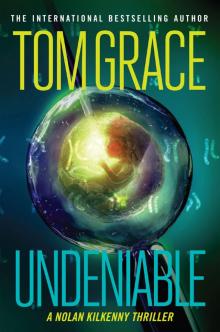 Undeniable
Undeniable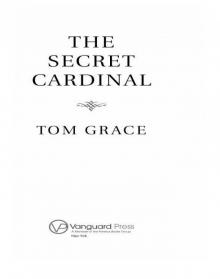 The Secret Cardinal
The Secret Cardinal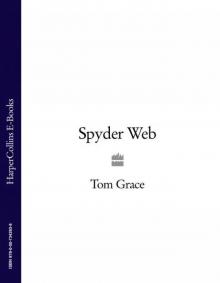 Spyder Web
Spyder Web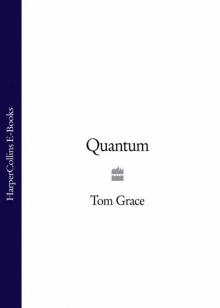 Quantum
Quantum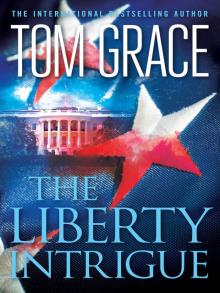 The Liberty Intrigue
The Liberty Intrigue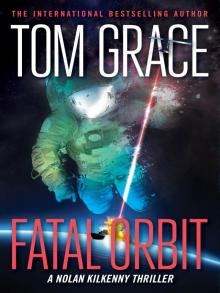 Fatal Orbit
Fatal Orbit